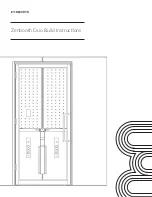
Instructions for Use
Rx Only: Federal Law (USA) restricts this device to sale by or on the order of a physician.
1. Using appropriate aseptic technique, prepare the patient’s site for needle penetration with the following items:
4 (10.2 cm) in x 4 in (10.2 cm) gauze sponges
povidone-iodine swabsticks (USA only)
5 ml syringe (for Lidocaine)
22 ga (0.7 mm) or 25 ga (0.5 mm) needle
5 ml ampules Lidocaine HCI 1% (USA only)
procedure drape
2. Prepare the patient and prepare for paracentesis procedure.
Procedure
3. Optional: A #11 disposable scalpel blade is provided to do an initial skin incision of approximately 2 mm to allow for easier needle penetration.
4. Remove plastic cover from the Caldwell paracentesis needle and advance the needle, with the “over the needle” cannula intact, into the abdominal cavity. A gentle
15 degree rotation may be necessary in either direction to facilitate passage through the skin.
5. After establishing correct placement of the needle/cannula via flow of fluid through the cannula, remove the needle by retracting the most proximal luer hub fully,
leaving the distal cannula in the patient.
6. If not already done, attach the provided 3-way stopcock to the luer lock on the inserted cannula (see illustration A) and attach the provided 60 ml syringe to the
stopcock (see illustration A), turn the stopcock valve to the appropriate position to aspirate initial sample of fluid for laboratory analysis. Alternatively, the tubing
set-ups in this arrangement (and those described below) may be directly connected to the cannula.
Large Volume Paracentesis Using Vacuum Bottles
7. Identify the vacuum bottle set (i.e., 1.52 m) tubing with roller clamp, male luer lock fitting on the proximal end and 17 G vacuum bottle needle on the distal end.
Connect the male proximal luer lock fitting to the lateral port on the stopcock and place the vacuum bottle needle into the vacuum bottle. (See illustration B).
8. The syringe may be removed from the stopcock to allow more mobility of the paracentesis needle. Please note: the stopcock valve must be in the closed position to
the syringe to prevent loss of vacuum in the vacuum bottle.
9. Open stopcock to correct position to begin flow into the vacuum bottle.
10. Close the stopcock to cease flow into the vacuum bottle. Note: the roller clamp provided on the set can be utilized to also control flow.
Large Volume Paracentesis Using Single Unit Wall Suction
11. Identify the suction tubing adapter set (1 each – 61 cm) tubing with slide clamp, male luer lock fitting on proximal end and stepped connector on distal end.
12. Identify the suction connecting tubing (2.44 m tubing with flexible female connectors at each end).
13. Connect the male luer lock fitting on the suction tubing adapter set to the lateral port on the stopcock and the stepped connector to the suction connecting tubing.
14. Connect the female connector on the suction connecting tubing to the wall vacuum suction canister. (See illustration C).
15. The syringe may be removed from the stopcock to allow more mobility of the paracentesis needle after the stopcock valve is in the correct position.
16. Open stopcock to correct position to allow flow into the wall vacuum suction canister. The stopcock can be turned off to facilitate repeated drainage of the wall
vacuum suction canister. Adjust suction to allow proper vacuum and to prevent occlusions or tubing collapse.
17. Close stopcock to cease flow into the wall vacuum suction canister. Note: The slide clamp provided on the suction tubing adapter set can also be utilized to control
fluid if tubing change is required.
Cautions:
This product is designed for a very specific procedure and should be used by those trained in paracentesis techniques. Penetration of internal organs is
always a possibility and precautions should be observed.
Caution:
This medical device contains DEHP (diethylhexylphthalate) that is presently classified in the European Union as a presumed human reproductive toxicant
based on data from animal studies. There is no conclusive scientific evidence that exposure to DEHP contained in medical devices has caused harmful effects in humans.
A risk assessment, which took into account DEHP exposure of all indicated patient populations, including those who are potentially at increased risk, was performed for
this device and the conclusion is that the device is safe when used as directed.
Warning: Do not reuse, reprocess, or resterilize this medical device. Reuse, reprocessing, or resterilization may 1) adversely affect the known
biocompatibility characteristics of the device, 2) compromise the structural integrity of the device, 3) lead to the device not performing as intended,
or 4) create a risk of contamination and cause the transmission of infectious diseases resulting in patient injury, illness, or death.
Paracentesis Trays





























